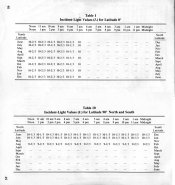Loren Sattler
Subscriber
I was shooting Tmax 100 today at ASA50 on an outing in Equador at 11,000 ft altitude with a Nikon F2 with a yellow filter at mid day. The weather was cloudy, no shadows which would be a 3-4 stop increase from sunny 16. With heavy clouds (no shadows) the meter in my F2 was indicating f8 at 1/60th shutter speed when I expected it to read about f4 at that speed. This was about a two stops difference (underexposed) from the "sunny 16" rule. Note, I confirmed the F2 readings with my cell phone app. Note, I did not remove the yellow filter for metering.
I usually shoot film near sea level. Should I expect 2 stops more light in these conditions due to high altitude and mid day shooting at the equator? Any experience out there in these conditions?
I usually shoot film near sea level. Should I expect 2 stops more light in these conditions due to high altitude and mid day shooting at the equator? Any experience out there in these conditions?







